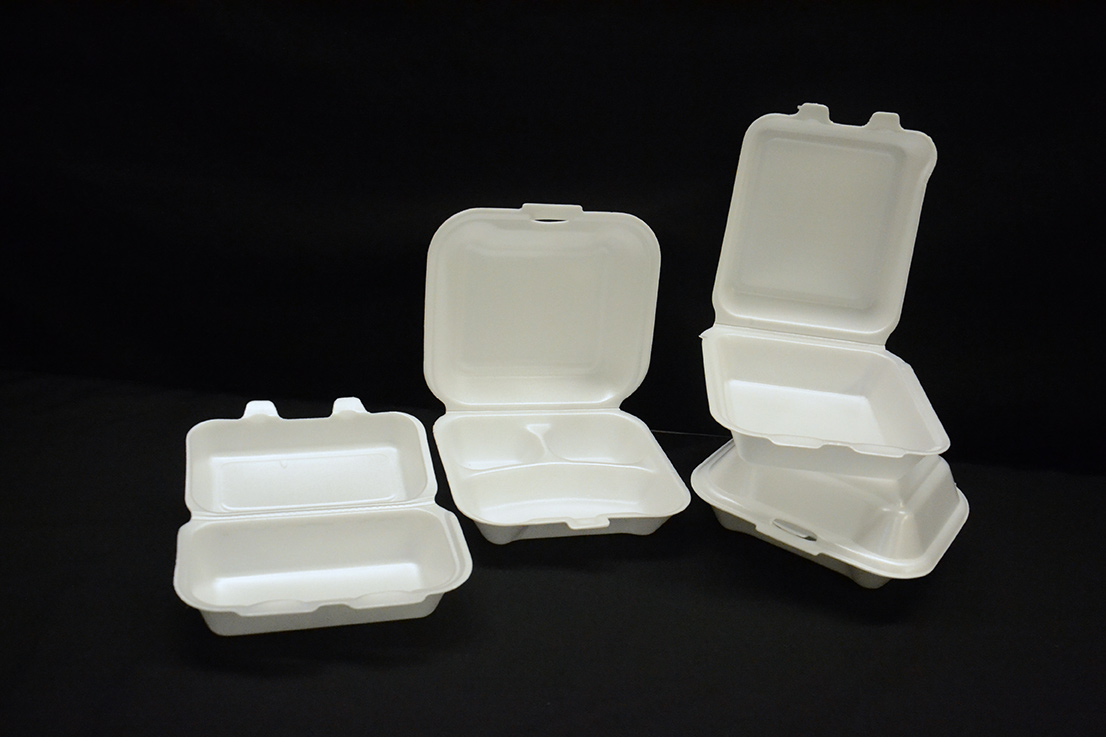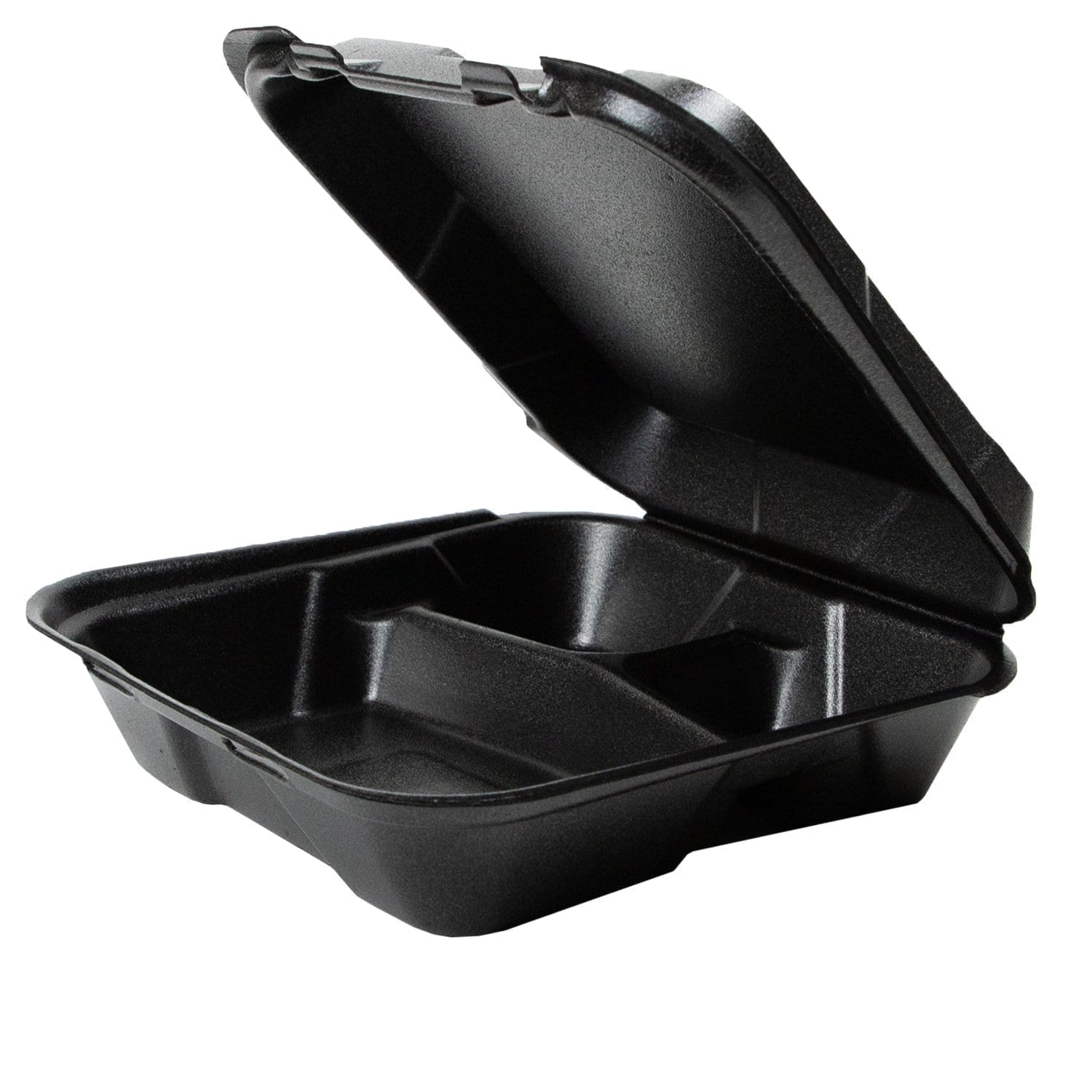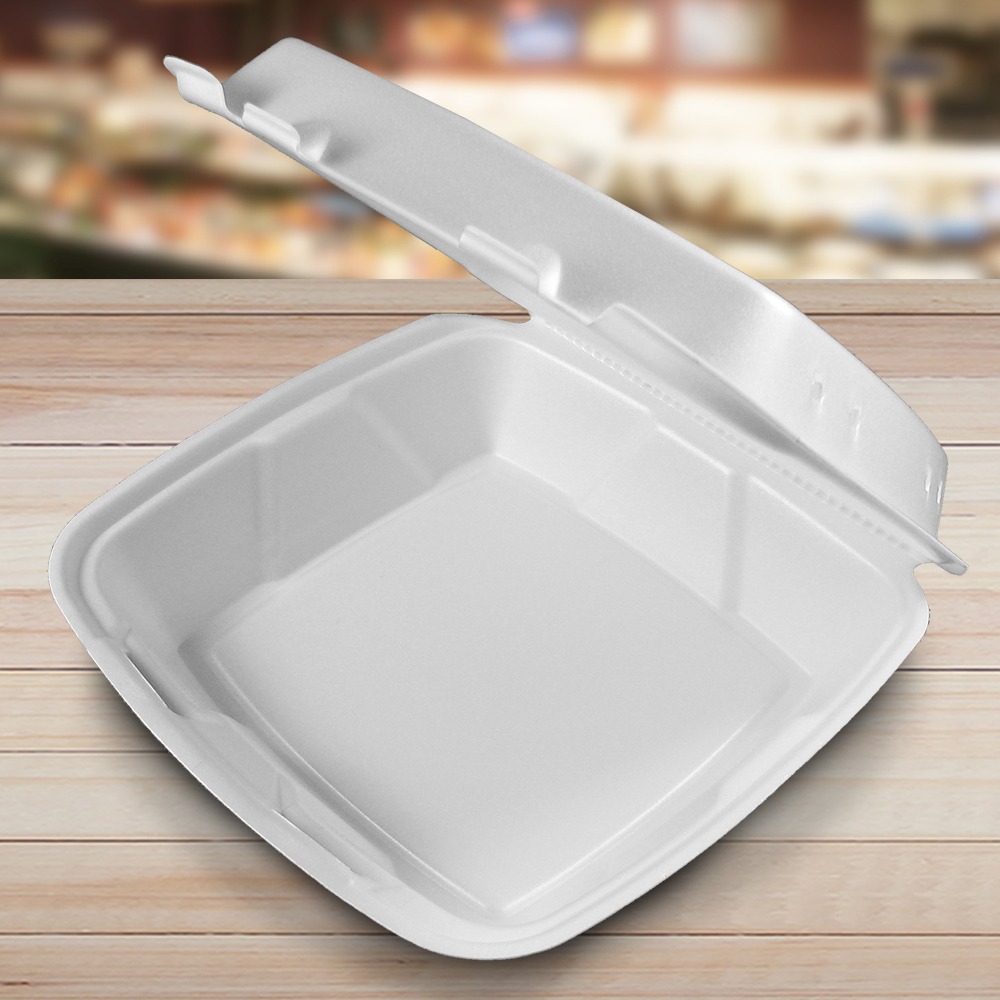Styrofoam food containers, ubiquitous in our daily lives, have raised concerns about their environmental impact and potential health risks. This article delves into the controversies surrounding styrofoam, exploring its non-biodegradable nature, styrene leaching, and the urgent need for sustainable alternatives.
As the world grapples with the consequences of plastic pollution, styrofoam food containers have come under scrutiny for their contribution to environmental degradation. Their non-biodegradable properties mean they persist in landfills for centuries, leaching harmful chemicals into the soil and waterways.
Environmental Impact

The use of styrofoam food containers has raised concerns due to their negative environmental impacts. These containers are primarily composed of polystyrene, a non-biodegradable plastic that can persist in the environment for centuries.
The accumulation of styrofoam waste in landfills poses significant environmental challenges. These containers do not decompose easily and contribute to the growing volume of plastic waste. Moreover, they can fragment into smaller pieces that contaminate soil and water sources, harming wildlife and ecosystems.
Production and Non-biodegradability
Styrofoam is produced using polystyrene, a synthetic polymer derived from petroleum. This process involves the release of harmful chemicals and greenhouse gases into the environment.
Polystyrene is highly resistant to degradation. It does not break down naturally and can persist in the environment for hundreds of years. This non-biodegradable nature makes it a persistent pollutant, accumulating in landfills and ecosystems.
Landfill Accumulation and Ecosystem Impacts
Styrofoam food containers contribute significantly to the volume of plastic waste in landfills. Their lightweight and bulky nature make them difficult to compact, resulting in increased landfill space requirements.
The accumulation of styrofoam in landfills can have detrimental effects on ecosystems. These containers can leach harmful chemicals into the soil and groundwater, contaminating the environment and posing risks to wildlife and human health.
Furthermore, styrofoam waste can fragment into smaller pieces, known as microplastics. These microplastics can be ingested by marine animals and birds, causing health problems and disrupting the food chain.
Health Concerns
Styrofoam food containers have raised concerns due to potential health risks associated with their chemical composition.
Styrofoam, also known as polystyrene, contains styrene, a chemical that has been linked to various health issues. Studies have shown that styrene can leach into food when it comes into contact with hot or acidic substances.
Styrene Exposure
Exposure to styrene has been linked to several health concerns, including:
- Cancer: Styrene is classified as a possible human carcinogen by the International Agency for Research on Cancer (IARC).
- Developmental disorders: Exposure to styrene during pregnancy has been associated with an increased risk of developmental disorders in children, such as low birth weight and cognitive impairment.
- Other health effects: Styrene exposure has also been linked to respiratory problems, headaches, and fatigue.
Alternative Materials

Styrofoam has been widely used in the food industry due to its insulating properties and low cost. However, concerns about its environmental impact and potential health risks have led to a search for sustainable alternatives.
Several alternative materials have emerged as viable options for food containers, each with its own advantages and disadvantages:
Biodegradable Plastics
- Advantages:Biodegradable plastics are made from plant-based materials and can break down naturally over time, reducing environmental pollution.
- Disadvantages:Biodegradable plastics can be more expensive than traditional plastics and may not have the same level of durability.
Compostable Materials, Styrofoam food container
- Advantages:Compostable materials, such as bamboo or sugarcane pulp, can be broken down into organic matter through composting, enriching the soil.
- Disadvantages:Compostable materials may not be as widely available or cost-effective as other alternatives.
Recyclable Materials
- Advantages:Recyclable materials, such as aluminum or glass, can be reprocessed into new products, reducing waste and conserving resources.
- Disadvantages:Recyclable materials may require specialized recycling facilities and may not always be accepted in all recycling programs.
Examples of Sustainable Alternatives
Many companies and organizations are adopting sustainable alternatives to styrofoam food containers:
- McDonald’s:In 2021, McDonald’s announced plans to phase out styrofoam containers in favor of paper-based alternatives.
- IKEA:IKEA has committed to using only renewable and recyclable materials in its packaging by 2030, including phasing out styrofoam.
- Whole Foods:Whole Foods has implemented a “Zero Waste” initiative, which includes eliminating styrofoam packaging from its stores.
Consumer Behavior
Consumer attitudes and behaviors towards styrofoam food containers vary widely. Convenience and cost are key factors influencing consumer choices, with styrofoam’s lightweight and insulating properties making it a popular option for takeout and delivery. However, growing environmental awareness has led to increased concerns about the negative impacts of styrofoam on the environment.
Factors Influencing Consumer Choices
- Convenience:Styrofoam containers are lightweight, disposable, and provide good insulation, making them convenient for takeout and delivery.
- Cost:Styrofoam is relatively inexpensive compared to other packaging materials, making it an affordable option for businesses and consumers.
- Environmental Awareness:Consumers are becoming increasingly aware of the environmental impact of styrofoam, which has led to a growing preference for more sustainable alternatives.
Encouraging Reduced Styrofoam Use
Encouraging consumers to reduce their use of styrofoam food containers requires a multifaceted approach that includes:
- Education:Raising awareness about the environmental impacts of styrofoam and providing information on alternative materials can help consumers make informed choices.
- Incentives:Offering discounts or rewards for using reusable containers or opting for more sustainable packaging options can encourage consumer behavior change.
- Regulation:Implementing bans or restrictions on styrofoam use, similar to those already in place in some cities and countries, can effectively reduce consumer reliance on this material.
Government Regulations
Governments worldwide are recognizing the environmental concerns associated with styrofoam food containers and implementing regulations to address their use. These regulations vary in approach, ranging from bans and restrictions to extended producer responsibility programs.
Country and Regional Initiatives
Several countries and regions have taken proactive steps to reduce the use of styrofoam food containers:
- European Union:The EU has banned the use of expanded polystyrene (EPS) food containers in food service establishments since 2021.
- United States:Many cities and states in the US have implemented bans or restrictions on styrofoam food containers, including New York City, San Francisco, and Seattle.
- Australia:The state of South Australia has implemented a ban on single-use plastics, including styrofoam food containers.
Successful Regulatory Initiatives
Regulatory initiatives that have successfully reduced the use of styrofoam food containers include:
- Bans and restrictions:Bans and restrictions have proven effective in significantly reducing the use of styrofoam food containers in affected areas.
- Extended producer responsibility programs:These programs hold manufacturers responsible for the end-of-life management of their products, encouraging them to design and produce more sustainable alternatives.
- Financial incentives:Governments can offer financial incentives to businesses that switch to more sustainable packaging options, further driving down the use of styrofoam food containers.
Design Innovations

The environmental impact of styrofoam food containers has sparked a wave of innovative design solutions aimed at reducing their ecological footprint. These innovations prioritize the use of sustainable materials and explore creative packaging concepts to minimize waste and promote sustainability.
One significant innovation lies in the adoption of biodegradable or compostable materials in container design. These materials, derived from plant-based sources or organic waste, break down naturally over time, reducing the accumulation of non-biodegradable plastics in landfills and the environment.
Biodegradable and Compostable Materials
- Plant-based plastics, such as polylactic acid (PLA) and cellulose, offer biodegradable alternatives to traditional plastics. These materials decompose through natural processes, leaving no harmful residues behind.
- Compostable materials, like bagasse (sugarcane fiber) and bamboo, can be broken down into organic matter through composting, enriching the soil and reducing waste.
Beyond material innovation, creative packaging solutions also contribute to sustainability. These solutions focus on reducing waste and maximizing efficiency in packaging design.
Creative Packaging Solutions
- Reusable containers: Encouraging the use of reusable containers reduces the need for single-use packaging, minimizing waste generation.
- Portion-controlled packaging: Designing containers that accommodate specific serving sizes helps prevent overconsumption and reduces food waste.
- Innovative shapes and designs: Exploring unique shapes and designs for containers can optimize space utilization, reducing packaging materials and transportation emissions.
These design innovations, coupled with consumer awareness and government regulations, are paving the way for a more sustainable future for food packaging.
Case Studies
Several businesses and organizations have embraced sustainable alternatives to styrofoam food containers, demonstrating their commitment to environmental stewardship and consumer well-being.
These initiatives have encountered challenges, such as the need for investment in new materials and equipment, as well as the need to educate consumers about the benefits of sustainable packaging. However, they have also achieved notable successes, including reduced environmental impact and improved brand reputation.
McDonald’s
In 2018, McDonald’s announced its commitment to phasing out foam packaging globally by 2025. The company has since implemented a number of sustainable alternatives, including paper-based containers and reusable cups. This transition has helped McDonald’s reduce its environmental footprint and appeal to environmentally conscious consumers.
Ikea
Ikea has been a pioneer in sustainable packaging, introducing plant-based and recycled materials into its product line. The company’s “Food for Good” initiative aims to make healthy and sustainable food more accessible to customers. Ikea’s commitment to sustainability has earned it recognition as a leader in the industry.
Chipotle
Chipotle has made significant strides in reducing its environmental impact, including the elimination of styrofoam bowls. The company now uses compostable bowls made from plant-based materials. This change has not only reduced Chipotle’s carbon footprint but has also improved the customer experience.
Positive Impact
These case studies highlight the positive impact that businesses can have on the environment and consumer behavior by implementing sustainable alternatives to styrofoam food containers. These initiatives have not only reduced waste and pollution but have also raised awareness about the importance of sustainability.
Question Bank: Styrofoam Food Container
Are styrofoam food containers recyclable?
No, styrofoam food containers are not typically recyclable due to their low density and contamination with food residue.
What are the health risks associated with styrofoam food containers?
Exposure to styrene, a chemical found in styrofoam, has been linked to potential health issues such as cancer and developmental disorders.
What are some sustainable alternatives to styrofoam food containers?
Biodegradable materials like paper, bamboo, and plant-based plastics offer eco-friendly alternatives to styrofoam.
